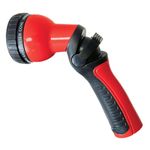
While celtuce, or stem lettuce, may sound like just another novelty vegetable, it’s far from that. If you are not familiar with celtuce, just think of it as overgrown romaine lettuce. With celtuce, it’s all about the stem, as the mature leaves can be too bitter for many (although they are edible and sometimes used in stir-fries). In the garden, a celtuce plant grows much larger than any other lettuce; a row of celtuce at first might look like collards or cabbage.

A brief history of celtuce
Long cultivated in Western China, celtuce has roots that go back to the Egyptians and Romans, where most lettuces originated. Ancient varieties of romaine lettuce made their way to Tibet and China, where savvy cooks discovered that the crispy stems enhanced their dishes more than the leaves did. Over time, these romaine varieties evolved through human selection into lettuces with thickened stems, resulting in what we now know as celtuce. For centuries, these varieties were limited to agricultural areas in rural western China, but they are finally being appreciated across the globe as foodies discover what they were missing.
Celtuce arrived in North America in the early 1800s, most likely with seeds that came with the first wave of Chinese immigrants. While it occasionally appeared in seed catalogs before 1900, often listed as “asparagus lettuce,” this surely confused farmers and home growers, as it had disappeared from seed catalogs by 1910. The Burpee company reintroduced it in the 1930s as “celtuce” (combining the words celery and lettuce). In China, celtuce is more often called stem lettuce, or wosun.

When to sow celtuce seeds
Like other lettuces, celtuce germinates best in cool soil (35° to 60°F), though it’s a good crop for spring, summer, and fall. Celtuce could be the first crop you sow in March or April, as the seedlings are cold tolerant; it could also be one of the season’s last crops. A sowing in mid-April will mature in late June, and a July sowing will mature in mid-September.
Since celtuce takes about 60 days to mature from seed, early August is the last chance you have to sow celtuce seeds if you live in a climate with a hard winter, as the growth rate will slow with cooler weather and the stem may not grow large enough. Some sources advise that you can sow seed later, but I believe that will really only work for Zones 6 and above.

How to grow celtuce
Seedlings can tolerate transplanting nicely, but be sure to space them properly due to their mature size. Plan on providing 14 to 24 inches between seedlings to allow for the plants to stretch out. Hardened seedlings can handle moderate frosts and even temperatures down to 24°F for brief periods.
Harvest celtuce before the stems split, or when they are at least 1 inch in diameter. In cool, moist weather, some stems can become 2 or 3 inches thick, but in hot summers it’s better to harvest when stems are still the size of a carrot.
Celtuce enjoys rich soil and, most importantly, consistent moisture. This is the key for success, as the fleshy, thick stems can split if a drought is followed by heavy rain.

How to cook celtuce
Preparation is easy. Remove the leaves and roots (although the leaves are edible), and peel the stem with a potato peeler. The bright green flesh of the stem is almost completely fiberless, and once peeled it has a crispy yet tender texture like that of a water chestnut, even when cooked. The flavor of celtuce is nutty and mild. While celtuce can be eaten raw, traditional ways of cooking it are to sauté it in white wine and sesame oil or use it in stir-fries. It doesn’t need to be cooked a long time—only until it’s warm.
Where to buy celtuce seeds
‘Spring Tower’ is a classic celtuce variety specifically formulated for North American growers. It can be purchased from Johnny’s Selected Seeds. ‘Green Mountain’ is another great variety, available from Baker Creek Heirloom Seeds.
—Matt Mattus is the author of two books: Mastering the Art of Flower Gardening and Mastering the Art of Vegetable Gardening. He gardens in Worcester, Massachusetts.
Photos: Matt Mattus
Fine Gardening Recommended Products

XLUX Soil Moisture Meter

Nelson Multi-Pattern Stationary Sprinkler

Dramm Revolution Adjustable 9-Pattern Metal Hose Nozzle


















Comments
To be really very very honest to you I actually thought that you would just be arrogant as well as like those highbrows as you are so very knowledgeable but in reality, you are so very humble and the real manner in which you just keep sharing your very knowledge to all, it actually deserves my commendation. I want to write review on https://kingessays.com/essay-topics.php website about your amazing article and inctude it on list.
Log in or create an account to post a comment.
Sign up Log in